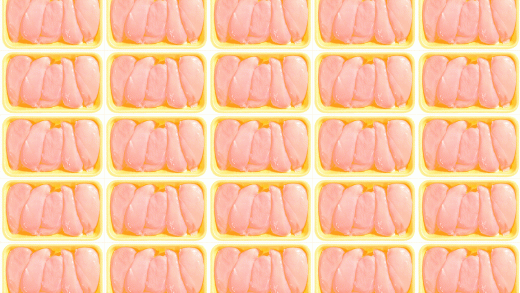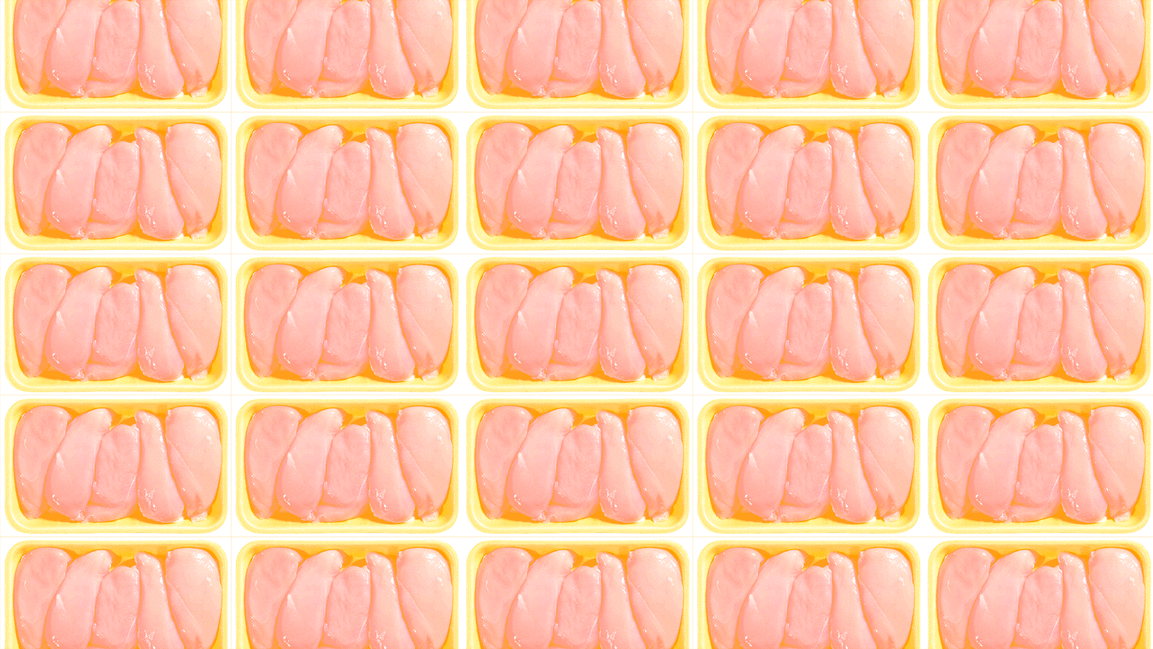A new chicken brand vows to save the climate while ending supermarket food waste. Could it really?
A new chicken brand backed by a roster of food heavyweights says it’s found a way to tackle the twin environmental concerns of food waste and greenhouse gas emissions. Early next year, Do Good Chicken says eco-conscious shoppers will be able to buy the first “carbon-reduced” chicken from grocery aisles. The trick, it says, is upcycling American grocery stores’ massive amount of surplus fruits, vegetables, and meat into a high-quality chicken feed that it can give its birds.
Founders Justin and Matt Kamine have already lined up serious financial backing ($169 million from investment company Nuveen), plus backing from some big names in food. Among them is Sam Kass, President Obama’s White House chef, who’s joined as chief strategy officer. Former USDA Secretary Ann Veneman is serving as an advisor. Top Chef host Tom Colicchio has lent his celebrity endorsement. The product is supposed to debut at major grocery chains in February.
Do Good tells Fast Company that each chicken it raises diverts 4 pounds of food waste from the landfill, preventing 3 pounds of greenhouse gases from entering the atmosphere. The company argues this makes it “the first domestic chicken brand actively combating climate change.”
That’s not true, technically; other chicken producers have been pitching their products as climate-friendly for a while, like Blue Apron founder Matt Wadiak’s Cooks Venture that relies on regenerative ag. Meanwhile, Kroger just announced it’s introducing “the world’s first carbon-neutral eggs.” Asked about these other producers, Do Good responded: “Do Good Chicken is a first-of-its-kind carbon-reduced chicken product available at retail that empowers consumers to fight food waste and combat climate change.”
The company has started out with just one facility, in eastern Pennsylvania. It can convert 58,400 tons of food waste a year from 450 grocery stores into ingredients for the feed its contract growers use to raise the birds. Do Good argues this model can be scaled up to make a more sizable impact.
“We think we can convert the vast majority of retail food waste in the next five to 10 years,” Kass told Politico. He added that their chicken will be “priced for the many, not for the few,” and “significantly” below organic—which may raise another question that begs to be answered: So it’s not organic?
The answer is no, Do Good says, because America doesn’t produce enough surplus organic food to make this model work. (This leads to humorous FAQs on its website like “Does this mean the chickens are eating garbage? Absolutely not. Surplus groceries are not garbage. We transport edible, near-expiration food in temperature controlled coolers to assure the food stays fresh.”)
Each chicken under Do Good’s model requires 4 pounds of surplus food. However, the average broiler chicken can consume that much feed in the first week of its life. A Do Good chicken’s diet requires traditional feed as well, or access to a pasture with seeds and insects.
The company wouldn’t say specifically what else its chickens are eating—just that the surplus food ingredients are “included into the chicken’s diet over the course of its lifetime to get to the reduction of 3 pounds of GHG.” But it tells Fast Company this special mix “drastically reduces” greenhouse gases associated with chicken feed, which is “where approximately 70% of the poultry production GHG emissions” come from.
Removing 3 pounds of greenhouse gas emissions per bird is nothing to sneeze at—Do Good notes the average American eats 98 pounds of chicken per year. Multiply that by the couple hundred million people nationwide who eat chicken, and that’s a lot of pollutants not floating in the atmosphere.
But when it comes to sustainability, eliminating food waste is half the problem: Agriculture is also among the planet’s worst polluters as an industry. Poultry farming is less bad than cattle ranching, yet it still creates tons of air pollutants and lots of ground waste. Birds (their manure particularly) account for a big chunk, but raising them also requires massive amounts of resources—electricity, gas for transit, raw ingredients for the feed. Do Good touts a carbon equation, certified by Ruby Canyon Environmental and approved by the USDA, that’s used to calculate the amount of methane emissions reduced by diverting grocery food from the landfill (this is the “3 pounds” figure on its labels). Do Good includes its own direct emissions related to manufacturing the feed, and also tells Fast Company: “We have incorporated energy and water efficiencies into our production facility and will continuously improve as new technologies become feasible.” It says Ruby Canyon has estimated its feed-production facility has a daily carbon footprint of 12,533 metric tons, but diverts the equivalent of 35,066 metric tons of food waste per day.
Do Good has a roadmap as well to reportedly help contract chicken growers “further reduce their own direct emissions, such as the electricity, etc., that is involved with the growing of the chickens,” though it didn’t elaborate on what those plans were.
When it hits stores next year, the chicken will make a dent, but consumers will get to decide if diverting waste into a wasteful industry is truly world-changing or just marketing spin.
(49)



